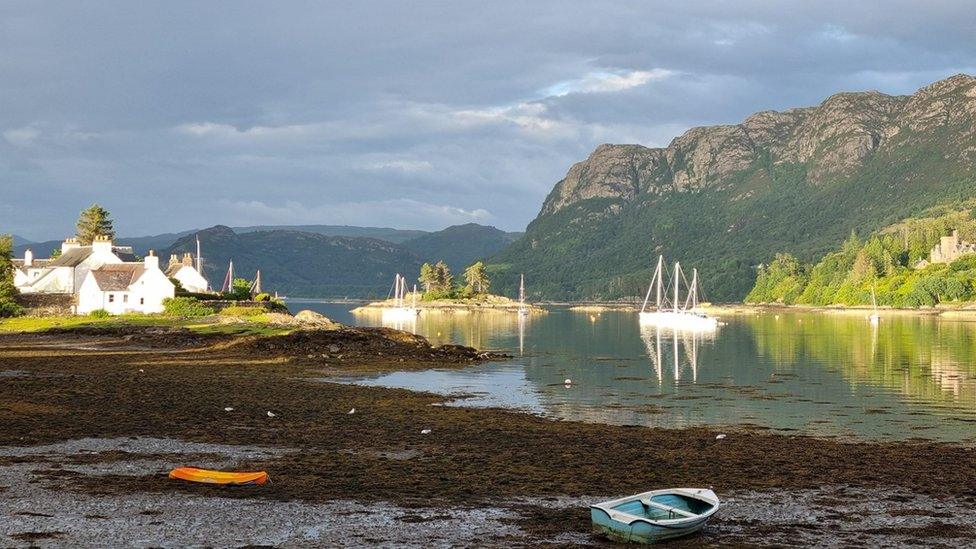Where has the UK summer gone?
- Published

Summer 2023 so far has been one of contrasts - after the warmest June on record we had an exceptionally wet July.
Northern Ireland and much of north-west England had their wettest July on record. Looking ahead there is no immediate end to the distinctly un-summery conditions. So what is going on?
The year so far
You can divide the year in to chunks of contrasting weather that have tended to stick around for many days or weeks.
January started off mild and unsettled but then turned drier and colder. It stayed that way into February which was the driest since 1993 across the UK as a whole, with central and southern England recording less than 20% of the rainfall normally expected. Across the UK it turned out to be the UK's sixth wettest March on record.
Wales was particularly wet in March with flooding in some areas like this spot in Powys
Any spring warmth was hard to come by. After a cool April, very warm weather was distinctly lacking in May. Nowhere reached 24掳C until the month was nearly over, on the 27th.
However, that theme changed dramatically in June. Temperatures soared to 32.2掳C, with a heatwave being declared in many places and becoming the warmest June on record which, according to .
The length of the warm spell in June was particularly unusual
It was all change again in early July with low pressure setting in, and staying put. While much of Europe sweltered in a blistering heatwave the UK sat under cool, wet weather which looks set to stay for the first part of August too.
Much of the UK saw more rain than average rainfall, though some parts of the country saw more rain than others
Blocked patterns
The notable thing about these wildly differing periods of weather has been how long they have stuck around and how long we have had to wait for things to change.
This is down to something called a blocked weather pattern.
Often the jet stream - the flow of winds high up in the atmosphere - rushes quickly from west to east in nearly a straight line. Weather systems will move overhead rapidly and the weather will change from day to day.
At other times the jet stream weakens and the flow becomes much more bendy, winding northwards and southwards forming big ridges and troughs.
A meandering jet stream creates a blocked weather pattern
In these situations weather systems tend to get stuck in the same place for a long time and so changes only come about very slowly.
Depending on where they develop, blocked weather patterns can bring extremes of weather - heatwaves and cold spells, floods and drought.
Is it because of climate change?
Some studies suggest climate change might make blocked patterns more common.
The jet stream is driven by the contrast in the temperature north to south, and with the Arctic warming more quickly than areas further south that contrast could lessen. This would weaken the jet stream and make it more susceptible to these waving patterns.
The science on this is complex though - and waves in the jet stream happen naturally anyway - so it's not yet clear how big an effect climate change is having.
What we do know is that when those blocked patterns do occur the extremes of weather they bring, including floods and heatwaves, are likely to be more severe in a warmer world.
Will summer return in August?
The unsettled spell looks to continue through the first 10 days or so of August. Showers or longer spells of rain are likely, along with breezy conditions at times, and temperatures will be generally rather cool. There will be some drier and brighter spells between the showers. Into the second half of the month, there is more of a signal for some drier, more-settled intervals, but prolonged hotter and drier weather looks unlikely.
You can follow 91热爆 Weather Online, on and on .
- Published13 July 2023
- Published7 July 2023